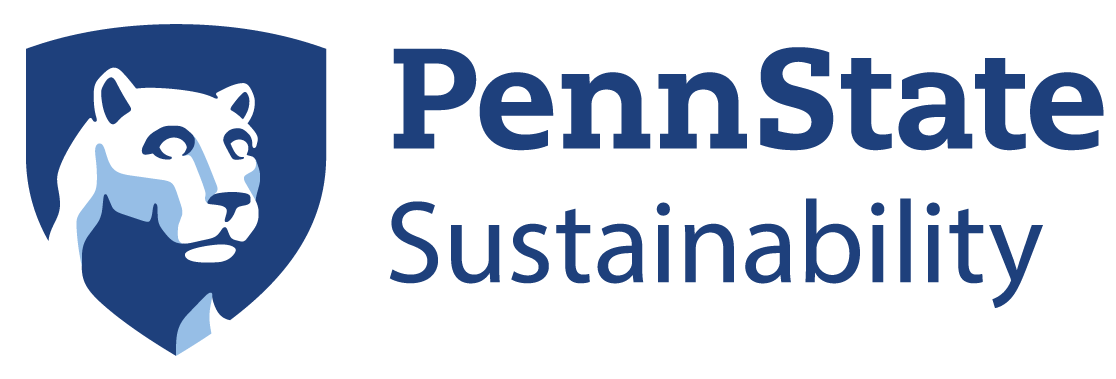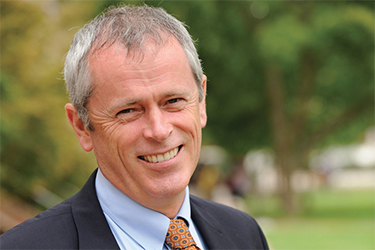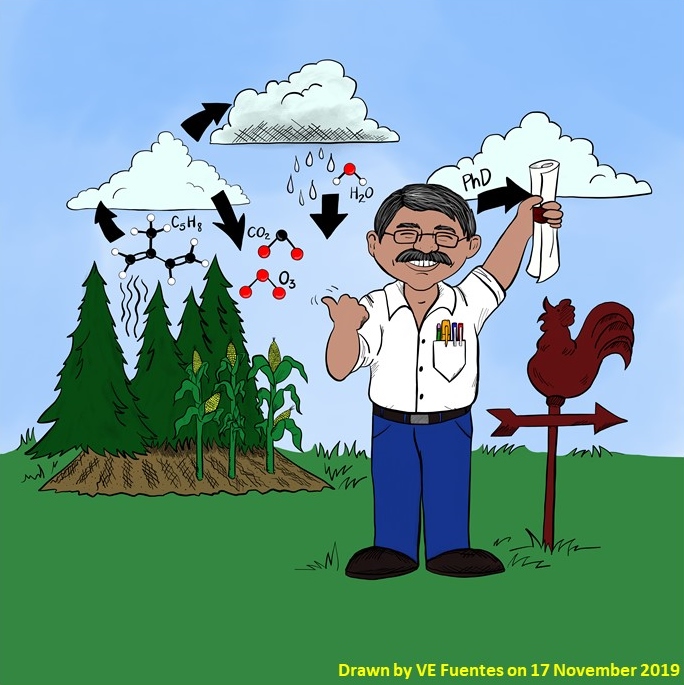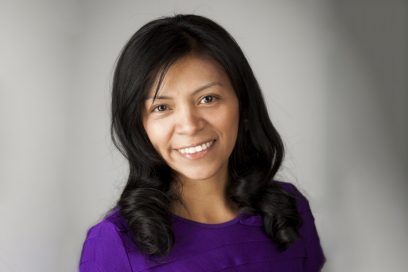Chef Tawnya Brant, Entrepreneur, Author, Top Chef Canada Competitor, and Indigenous Food Sovereignty Leader
In our recent interview with Chef Tawnya Brant, an Entrepreneur, Author, Top Chef Canada Competitor, and Indigenous Food Sovereignty Leader, we learned more about Brant’s personal journey, exploring her lived experiences, her passion for Indigenous food sovereignty, and the transformative role of food in fostering cultural resilience and community well-being.
Chef Tawnya Brant is a powerful advocate for Indigenous food sovereignty. She is reclaiming and revitalizing her culture’s deep-rooted connection to the land and its offerings. As a chef, entrepreneur, and community leader, Brant has dedicated her career to preserving Indigenous culinary heritage and empowering future generations to take control of their food systems.
In this exclusive interview, we gain insight into the intersections of food, identity, and leadership and the importance of returning to traditional, sustainable practices in the face of a rapidly changing world through her words.
This interview has been edited for length and clarity. All opinions expressed are those of the subject.
For those who weren’t able to attend your keynote, can you share the story of your journey from a lover of cooking and the culinary arts to an advocate for the indigenous food sovereignty movement?
I’ve been a chef for 30 years, and I don’t know a life outside of the kitchen. I tried to go to school, but I figured that wasn’t for me, so I went to culinary school instead.
I grew up in a First Nations community with a mother who was a seed keeper and avid gardener. We are an agrarian people. Being farmers is a part of our lifestyle. So, I don’t really know a life without indigenous food, knowledge, and ways of being.
Nothing about the way we lived ever felt like having “jobs.” It was more natural. ‘Oh, it’s springtime, the sap is running.’ In different seasons, there are things that you look forward to doing as a family or a community.
It took about 20 years into my career before I made the connection. It started with an observation – I’d been working professionally as a chef with all these tremendous but more mainstream foods. Still, when I was at home, I worked almost exclusively with Indigenous foods. In the background, while I was making these observations, we were hearing about what is called the indigenous food sovereignty movement. When I sat back to think about it, we were already doing that.
We’re not a club or organization. Nobody gives us money. Everything we do is self-funded and facilitated through family work, volunteer community labor, and other activities. It’s just people who have a passion for what we’re doing and want to come and learn, hopefully take that home, and do that with their families, too.
Because my mother was a schoolteacher, it was always vital for us to include youth or young families. It’s essential to raise children to be familiar with their foods and culture, to know what Indigenous life is, and not to get sick from eating ultra-processed foods. These lessons were instilled in me because of my Mom—because of her passion. It was perfect that I just happened to have this complimentary gift of cooking that we could use to bond with one another.
Please talk more about your family and cultural background and what sparked your connection to sustainability.
During the pandemic, I was offered a cooking space in my community, which had never happened before. The place that was there before me was there for 35 years. It was the first time in my community that a business had ever switched hands because the challenge is that you’re not on the waterline – there’s no infrastructure in my community. So, if you want a restaurant, you’re building everything from the ground up. I was getting minimal support and no money. Nobody cared what I was doing, but I did it anyway. I didn’t know why, but I had a passion.
Sometimes, the lack of community support can feel a little hurtful, but at the same time, I was able to take motivation from it. It was kind of like, ‘Well, that’s fine. I don’t need you. Our people never needed you. We don’t need money. You don’t need money to have a garden.’
This is an example of loss in my community. We have lost exposure to our traditional practices; we have lost knowledge. The strength and empowerment that come from knowing that you can be self-sufficient and allow other people to garden and grow their food is incredible. Knowing where your foods come from, not being disgusted by seeing a deer get skinned. We have a disconnection with our foods that I’d love to see people move away from.
People in our community were looking to our family to champion those things, and then we unexpectedly lost my Mom, and I was left to make a plan. I didn’t expect to lose her when I did. She was a big fan of sustainability. She had her environmental science degree. She built her house on solar power. She gave us a somewhat non-traditional but also very traditional upbringing. It was important for her when we were kids to have spaces to disconnect and just be.
My childhood was amazing, and I want to recreate that for my kids. What’s impressive is that even the UN is telling us that our food systems are in crisis. We know that you can only genetically modify something so much before it’s not food anymore, and we’re critically coming to that point. They say that Indigenous people from across the world are going to be the ones they turn to to learn our growing practices. Indigenous people are going to be the ones who save our food systems. On top of that, more importantly, most of those people will be women.
Most of those farmers and growers are women because we are in our community, with our children, or at home when the men leave for work. I want to be a part of that. I want to be able to say, “You know what? We did that and didn’t need men to do it.” Because coming from a matriarchal society, I don’t know any other way. Our guys are there to do the heavy lifting, but other than that, they’re just there, right?
As a chef deeply connected to Indigenous food systems, could you describe what Indigenous food sovereignty means to you and why it’s such a crucial part of sustainable development?
For me, it’s just about feeding our nations and communities healthily and diversely. It’s about choosing what you want to eat and having enough to share with your entire community.
Indigenous communities are unique because they’re so close-knit. It’s important to uplift each other. It’s not about personal gain or wealth, like keeping up with the Joneses. It’s about uplifting an entire community because the whole family does good if one person does better.
In Indigenous communities, if one person owns a business, that would be great, but the entire family is uplifted because of it, right? It might be, you know, extended family and stuff like that, working for them, but an entire family is uplifted from that opportunity.
That’s how I think about sovereignty: being able to live the life that you want, not feeling constant stress or hunger, and being able to take care of yourself, but always in a communal sense. We used to always tell people there’s no successful lone wolf. You can’t do everything, and the sooner that we wake up to the reality that helping each other makes life a lot easier, the better we will be.
It’s also about recognizing people for their talents. Not everybody has a green thumb or can cook, but it’s about discovering your gifts and how they can contribute to your community. That’s a very Haudenosaunee worldview—to look for your gifts and exploit them for the good of your community and your family.
Generally, spending your time doing something you love is easier than forcing yourself to do something you don’t. Living your purpose and not hating your work is a view that needs to be considered in terms of sustainability and food sovereignty.
Indigenous food systems often emphasize seasonality and local sourcing. How do you incorporate these principles into your work, and why are they so crucial for sustainable food systems?
As Haudenosaunee people, we embrace the ever-changing nature of seasonal eating. This constant evolution brings a unique challenge for a chef like me, as it’s not always possible to plan menus far in advance. Instead, I wait until about two weeks out when I know what ingredients I’ll have. This unpredictability can be stressful for some, but it keeps our culinary practices exciting and diverse.
Our seasonal lifestyle also ensures that we’re constantly engaged in different activities. In the summer, we’re outdoors planting. In the fall, we’re hunting. In spring, we’re foraging and preserving. This constant movement and engagement with nature promotes a healthier lifestyle and keeps us mentally and physically active. We’re always learning and using our brains and hands, starkly contrasting the sedentary lifestyle many lead today.
One area of concern is the lack of emphasis on developing dexterity in children. This skill is crucial for many professions, including surgeons. However, with the rise of digital devices, children spend more time scrolling than practicing finger dexterity. This trend could potentially lead to a shortage of skilled professionals in the future.
It’s scary to think that we can’t use our bodies as expected or want to. I feel bad saying it, but we as a society are getting dumber. We’re damaging our brains; we’re destroying our DNA with modified foods – our kids are treated like experiments. They’re not being raised the way we were. I was raised in the 80s. So, this is not even to say that we had it good. Those were the days of getting Hawaiian punch and hot pockets for lunch.
Genetically modified foods might be “healthier” than processed foods, but they still have chemicals sprayed on them. There are herbicides, fungicides, and such that all affect us. I hear, too, that some gluten-free people are finding that most of them – it’s not a true gluten intolerance. It’s an intolerance to the round-up that was used on the flour.
Many Indigenous foods are nutritionally rich and deeply tied to health traditions. How do you see the connection between Indigenous foods and public health, especially in addressing modern health challenges like diet-related diseases?
We would be a lot healthier if we had real food. There are so many case studies and even observations I’ve made from having my shop—the difference that eating real food makes for people holistically, physically, and in every aspect of their lives. Right now, we’re not eating real food.
You don’t need a lab coat to make food. I’ve seen people get healthier, lose weight, or not be diabetic anymore simply because they started eating food that was just food.
We’re seeing the repercussions of introducing chemicals and pesticides into our food system: epidemic rates of diabetes, various cancers, and tumors. It’s not good. And it’s not just food. Different energy technologies and plants are placed near vulnerable communities before we can understand their repercussions.
I had a teacher when I was in university. She lived in Ajax, which is just north of Toronto. There’s a nuclear facility there. One of her studies was about the kids in the school adjacent to the facility. The lines went right over the school. It had ten kids with leukemia and a few with brain tumors. I remember her saying that it was the girls who were getting leukemia and the boys who were getting brain tumors.
To know that that’s what happens and nobody’s doing anything about it… Why are those kids still there? Why is anyone allowed to live there? She was told not to talk about it. But those parents deserve to know what’s making their children sick. The teachers deserve to know that they are at risk.
As a chef, can you talk about some of the most rewarding moments you’ve seen when cooking for your community?
There’s a lot of stigma still attached, especially with elders, because of the way that we were treated in the past for eating our cultural foods. Like, ‘Oh, you’re wild. You’re a savage because you’re eating stuff from outside.’ It’s a struggle to find what’s acceptable and to relearn that we shouldn’t have to hide our food practices or be ashamed of them.
But I get to see elders turn into little kids again. They might secretly be so happy to have a particular dish, but you can sometimes see that shame creep in. They were told their food was wrong or weird or they weren’t supposed to eat that. Our elders carry an immense amount of shame. It was never their fault.
I like jogging their memories, asking them, ‘What did you eat as a kid? Why did you eat that?’ One of my homies was raised very poor. They had a lot of mouths to feed. She told me they used to have sassafras, tea, and toast. She told me, “I actually liked that breakfast.” She realized, though, that they ate it because they had nothing else to eat.
Those memories are still good, though; I want them to feel that way about their food again. I want to help them no longer judge themselves or others for the negative messages that have been shared about our food.
Would you have any recommendations for those of us who have a limited amount of land or the lifestyle to grow our food, to be more in touch and connected with our food systems, and to know where our food comes from?
It’s a lonely road in terms of food sovereignty. It’s about supporting and uplifting the people who are already doing it. I see all the time that academics who are getting all kinds of funding and grants say things like, “Oh, I’m going to go to Oaxaca and learn about corn.” And then I ask if they’ve ever planted corn, and the answer is ‘no.’
We’ve had PhD students who are corn geneticists come to ask my mom to teach them about corn. She’d ask, “What kind of corn have you planted?” they’d tell her they’d never planted any corn. They’re getting Ph. D.s in something they’ve never touched.
“Ok, make a hole with your finger and put in two kernels.” “Does it matter which finger?” “No, it doesn’t matter.” “The seed goes in the hole?” “Yes, in the hole.” “Which side goes up?” “It will figure itself out. Just put it in.”
I find it interesting because institutions, as impressive as they are, promote people who are always outsmarting themselves—always focusing on doing something bigger, better, different, never done before, new, innovative. No one sits there and says, ” What did we do in the past? Are we still here thousands of years later because of how we used to do it?” Why take something perfect and try to change it when you should try to help it?
The little old ladies in First Nations communities are planting entire fields for their communities. Sitting there with a pencil and a laptop differs from what feeds people. That’s where academics should do more to support boots on the ground and grassroots organizations.
Just go into a community and observe. You don’t need permission to drive around. Somebody might ask who you are, but just be nice.
Can you share how food can be a powerful cultural expression and storytelling tool? How does your cooking celebrate and honor the histories and traditions of Indigenous peoples?
Every dish has a story, whether fictional or non-fictional, right? We look at food and tell the stories with our plates. What does this remind me of? Why do I love this? How are my ancestors involved in the ways of thinking that resulted in this dish?
Those are the questions I think about when I cook. There are certain things that I don’t know. I don’t even know why I do them; I just do them. For example, with feast cooking, I always make lemon meringue pies because that was my grandpa’s favorite. And if we’re eating with our ancestors, I want them to have what they miss, right?
We were told stories about how when we go back to ‘Skyworld’, the food is different. It won’t be like the food that we have here. When we have feasts, the spirit plates are taken back with the ancestors so they can have something in Skyworld, too.
That thought process has integrated into my perspective as a chef. I might be feeding a room full of people, but who else am I feeding, right? I’m not only thinking about those people in that room, but it’s an opportunity to bring up stories, lessons, and what those foods did for us in the past.
To have creativity and passion and be able to put that on a plate… that’s for me. It feeds me spiritually and makes me feel good. I like to see a room full of people enjoying what they’re eating.
I also want to consider people’s desires and requirements when it comes to food. For example, if there are people in the room with allergy restrictions or similar restrictions, I’ll do what I need to do to make sure that person has everything, too.
Do you see climate change threatening Indigenous food systems, and what strategies are being implemented to adapt to these changes?
Nope, and the reason for that is that we know our mother is alive, and we know our mother goes through seasons and changes just like we do. We like to blame ourselves for climate change, but worrying and blaming don’t do anything because it’s just the reality of the situation. Our seeds change just like we do, right?
They like to talk about that nice little vault they have in Norway or wherever, and my mom was always wondering if they ever grow seeds and then save seeds from the plants. I’m likI’m’how would I know? I’m not in Norway’. She goes, ‘But they’re taking and freezing them, waiting for some doomsday event. They think they’re going to take those seeds out and they’re going to grow.’ She thought they wouldn’t because the world when those seeds get put into that vault is very different from the world they will be taken out into. That’s why we grow our seeds every year: they will adapt to the environment, just like we do.
Think about how, at the beginning of winter, we think it’s freezing, and by the end of winter, we don’t care anymore because our bodies change with the seasons. It’s the same with our seeds. We have to recognize that they adapt, too. If you have a drought for one year, that’s going to make that DNA stronger with the seeds that survived. If you have a year of flooding, those plants must adapt to a wetter environment. We underestimate the abilities that seeds have to change.
We’ll survive this. It might not look like it does now, but we will survive.





